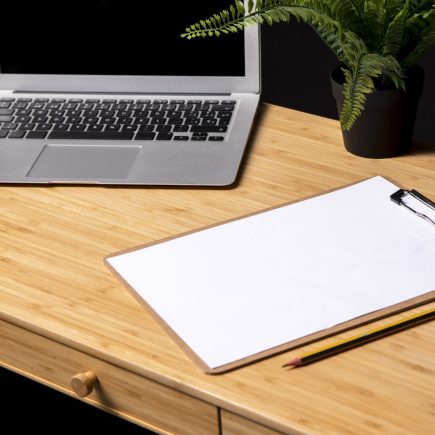
A camping trip becomes even more magical with the aroma of freshly grilled food in the air. Portable charcoal grills are a must-have for outdoor enthusiasts, allowing you to create delicious meals without compromising on quality or convenience. Whether you’re an experienced camper or a beginner, this guide highlights the top 10 portable charcoal grills to help you find the perfect fit for your needs. Read on to explore their features, pros, cons, and practical tips for getting the most out of each type.
1. Kettle-Style Grills

Kettle-Style Grills are a timeless camping classic, known for their rounded, dome-like design that provides excellent heat distribution. These grills are versatile, easy to use, and a great choice for campers who love the traditional barbecue experience.
Key Features:
- Domed Lid: Traps heat and smoke, ensuring even cooking and exquisite smoky flavors.
- Multiple Air Vents: Allow precise temperature control for slow cooking or high-heat grilling.
- Compact Design: Though spacious inside, kettle grills remain manageable for car camping.
| Pros | Cons |
| Retains heat effectively | Bulky for backpacking trips |
| Excellent for smoking meats | Requires stable surfaces |
Best Use:
Great for family cooking or small groups, kettle grills are particularly suited for smoky dishes and meals that require consistent heat.
Pro Tip: Create indirect heat zones by placing charcoal on one side of the grill. This setup is ideal for grilling thick cuts of meat.
2. Tabletop Grills

Compact and lightweight, tabletop grills are designed to fit on any flat surface, making them great for quick setups and small meals. Their portability makes them a go-to option for campers with limited space.
Key Features:
- Flat-Bottom Design: Ensures stability on picnic tables and countertops.
- Adjustable Cooking Grates: Allow for better heat management.
| Pros | Cons |
| Extremely portable | Limited cooking area |
| Easy to set up | Requires a clean, flat surface |
Best Use:
Ideal for solo campers or small groups, these grills shine during casual outdoor meals like hot dogs, burgers, or kebabs.
Pro Tip: Use a heat-resistant mat to protect the table and secure the grill in place.
3. Folding Portable Grills

Folding Grills are designed for ultimate portability. With collapsible legs and lightweight frames, these grills can fit into tight spaces while remaining sturdy enough for various cooking needs.
Key Features:
- Collapsible Legs: Allow for easy storage and transport.
- Slim Build: Takes up minimal space in your backpack or car.
- Quick Setup: No tools required.
| Pros | Cons |
| Ultra-light and compact | Smaller grilling capacity |
| Simple and portable design | Less stable in windy conditions |
Best Use:
A favorite among hikers and backpackers who need a lightweight, portable grill for quick meals on the go.
Pro Tip: Make sure to test the locking mechanisms before use to avoid accidental tipping during cooking.
4. Smoker-Style Grills

For campers who enjoy the art of slow cooking, Smoker Style Grills are the ultimate choice. Combining grilling and smoking capabilities, these grills bring a gourmet touch to any campsite.
Key Features:
- Integrated Smoker Box: Infuses food with rich, smoky flavors.
- Thermometers and Vents: Provide precise control over heat and smoke levels.
| Pros | Cons |
| Versatile in cooking styles | Heavier and less portable |
| Great for large cuts of meat | Longer cooking time required |
Best Use:
Excellent for BBQ enthusiasts who want to turn their camping trip into a culinary experience. Perfect for preparing ribs, brisket, or smoked chicken.
Pro Tip: Start with wood chunks like hickory or mesquite for your smoker box to enhance flavor.
5. Stainless Steel Portable Grills

Built for durability, Stainless Steel Grills offer weather resistance and long-lasting performance, making them a reliable option for frequent campers.
Key Features:
- Rust-Resistant Materials: Perfect for humid or coastal environments.
- Polished Finish: Makes cleaning easier and prevents stains.
| Pros | Cons |
| Durable and weather-resistant | Slightly heavier than other models |
| Easy to clean | Higher price point |
Best Use:
Ideal for campers visiting beachside locations or areas with unpredictable weather.
Pro Tip: To maintain the grill’s shine, use non-abrasive cleaners and always dry thoroughly after washing.
6. Vertical Portable Grills

Vertical Grills use a space-saving design to maximize capacity without a larger footprint. They are ideal for minimalist setups or areas with limited room.
Key Features:
- Stackable Layers: Provide multiple grilling surfaces in a small vertical space.
- Compact Frame: Fits easily in tight camping setups.
| Pros | Cons |
| Compact, space-saving layout | Smaller cooking capacity per layer |
| Lightweight and portable | Less stable on uneven surfaces |
Best Use:
A smart pick for minimalist or urban campers with limited room for gear.
Pro Tip: Place the grill on a sturdy, flat surface to avoid tipping.
7. Adjustable Heat-Control Grills

For those who like a little precision in their cooking, adjustable grills allow you to control the distance between the food and the heat source.
Key Features:
- Adjustable Grates: Provide customizable cooking options.
- Multiple Air Vents: Enhance fine-tuned temperature control.
| Pros | Cons |
| Perfect for varied dishes | Slightly more complex to operate |
| Efficient for cooking multiple dishes | Bulkier design |
Best Use:
Tailored for campers who like to prepare diverse dishes like seared veggies and medium-rare steaks.
Pro Tip: Keep a meat thermometer handy to monitor internal temperatures accurately.
8. Ash-Catcher Grills

Ash-catcher Grill make cleanup hassle-free by incorporating an efficient ash management system.
Key Features:
- Removable Ash Pans: Simplify cleanup.
- High-Capacity Catchers: Prevent overflow during extended use.
| Pros | Cons |
| Ideal for eco-conscious users | Slightly more expensive option |
| Minimizes cleanup efforts | Adds to grill weight |
Best Use:
Especially useful for multi-day camping trips where keeping the campsite clean is a priority.
Pro Tip: Line the catcher with foil for even easier disposal.
9. Hibachi-Style Grills

Hibachi grills are no-frills options that focus on efficiency and simplicity. With an open grill top, they’re perfect for quick meals like steaks and skewers.
Key Features:
- Compact and Open Design: Excellent for quick, direct-heat grilling.
- Thick Cast Iron Grates: Retain heat well for searing food.
| Pros | Cons |
| Simple and budget-friendly | Lacks a lid for heat retention |
| Lightweight and durable | Limited cooking versatility |
Best Use:
Great for minimalists or campers on shorter trips who want to grill small portions quickly.
Pro Tip: Use it outdoors only, as the open grill design can produce more smoke.
10. Multi-Function Grills

Multi-function grills are the ultimate all-in-one solution, combining grilling, smoking, and even steaming capabilities.
Key Features:
- Multi-Cooking Options: From traditional grilling to steaming and smoking.
- Extra Attachments: Include warming racks or smoker boxes.
| Pros | Cons |
| High cooking versatility | Bulkier and harder to transport |
| Suitable for larger groups | More time-intensive setup |
Best Use:
Perfect for large groups or those who want a kitchen-like experience outdoors.
Pro Tip: Ensure all attachments are securely packed to avoid losing smaller parts during transport.
With the right portable charcoal grill, your camping experience will go beyond breathtaking sunsets and starlit nights. From sizzling steaks to perfectly roasted marshmallows, these BBQs & Grills make it all possible. So, pack your gear, fire up those coals, and make every adventure unforgettable (and delicious).
FAQs
1. What should I look for in a camping grill?
Consider portability, ease of setup, and cooking capacity. Features like adjustable grates, ash catchers, or folding legs can make camping easier.
2. Is charcoal better than gas for camping?
Charcoal grills provide better smoky flavors, while gas is quicker and cleaner. The choice depends on your priorities.
3. How do you clean a charcoal grill after camping?
Remove and dispose of ashes safely, scrub grates with a grill brush, and wipe down the exterior with a damp cloth.
4.Can I use my portable charcoal grill in windy conditions?
Choose a sheltered spot and position the vents away from the wind. Use wind guards or natural barriers like rocks or trees.Stabilize the grill with weighted legs or place it on a firm surface






















